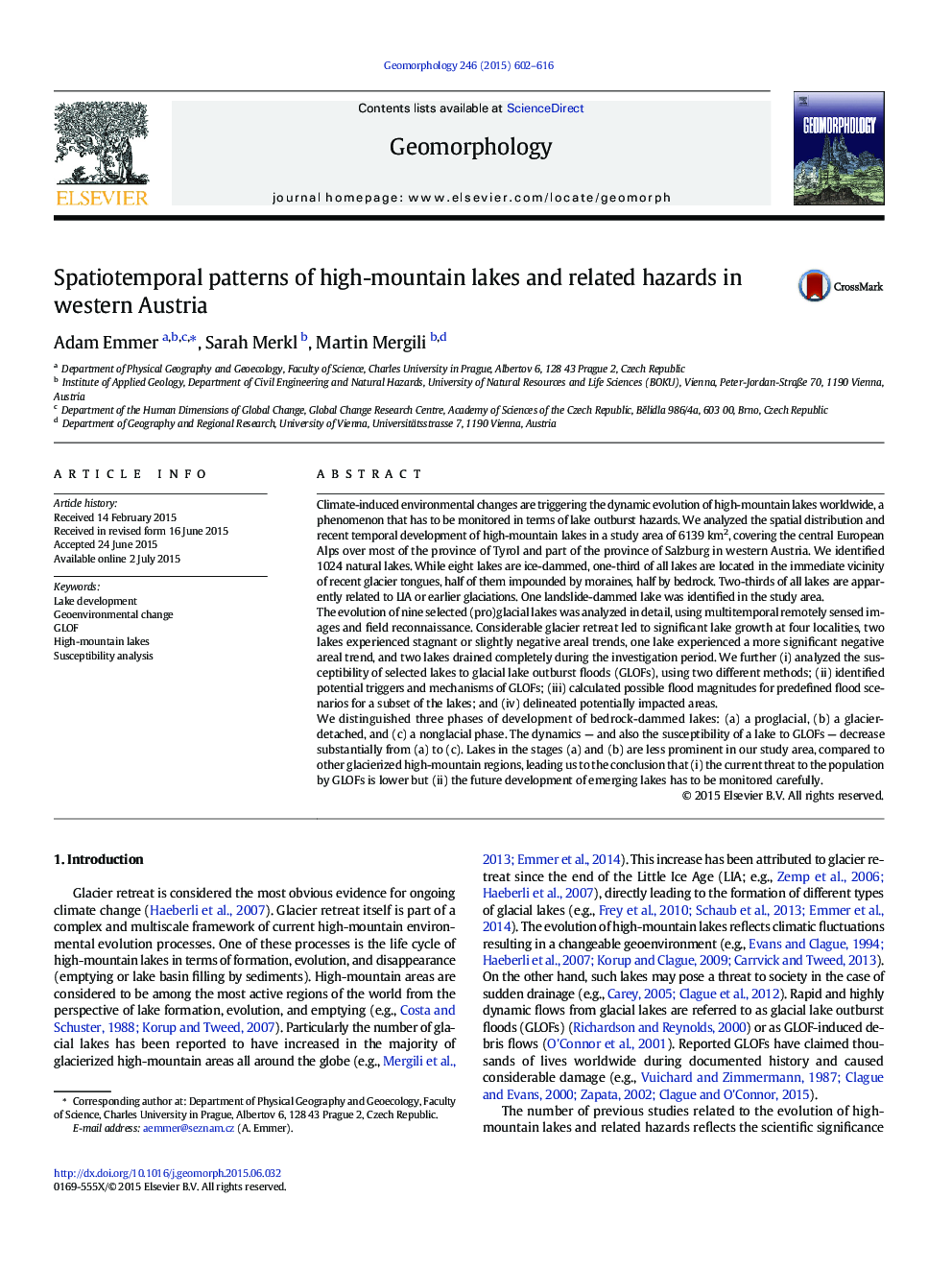| کد مقاله | کد نشریه | سال انتشار | مقاله انگلیسی | نسخه تمام متن |
|---|---|---|---|---|
| 6432003 | 1635403 | 2015 | 15 صفحه PDF | دانلود رایگان |
- 1024 lakes were detected, classified and described by several characteristics.
- The evolution and outburst susceptibility of selected young lakes were investigated in more detail.
- A system of phases of lake evolution and lake-glacier-relationships was proposed for bedrock-dammed lakes.
- Identified evolutionary patterns were synthesized in a general evolutionary scheme.
Climate-induced environmental changes are triggering the dynamic evolution of high-mountain lakes worldwide, a phenomenon that has to be monitored in terms of lake outburst hazards. We analyzed the spatial distribution and recent temporal development of high-mountain lakes in a study area of 6139Â km2, covering the central European Alps over most of the province of Tyrol and part of the province of Salzburg in western Austria. We identified 1024 natural lakes. While eight lakes are ice-dammed, one-third of all lakes are located in the immediate vicinity of recent glacier tongues, half of them impounded by moraines, half by bedrock. Two-thirds of all lakes are apparently related to LIA or earlier glaciations. One landslide-dammed lake was identified in the study area.The evolution of nine selected (pro)glacial lakes was analyzed in detail, using multitemporal remotely sensed images and field reconnaissance. Considerable glacier retreat led to significant lake growth at four localities, two lakes experienced stagnant or slightly negative areal trends, one lake experienced a more significant negative areal trend, and two lakes drained completely during the investigation period. We further (i) analyzed the susceptibility of selected lakes to glacial lake outburst floods (GLOFs), using two different methods; (ii) identified potential triggers and mechanisms of GLOFs; (iii) calculated possible flood magnitudes for predefined flood scenarios for a subset of the lakes; and (iv) delineated potentially impacted areas.We distinguished three phases of development of bedrock-dammed lakes: (a) a proglacial, (b) a glacier-detached, and (c) a nonglacial phase. The dynamics - and also the susceptibility of a lake to GLOFs - decrease substantially from (a) to (c). Lakes in the stages (a) and (b) are less prominent in our study area, compared to other glacierized high-mountain regions, leading us to the conclusion that (i) the current threat to the population by GLOFs is lower but (ii) the future development of emerging lakes has to be monitored carefully.
Journal: Geomorphology - Volume 246, 1 October 2015, Pages 602-616
